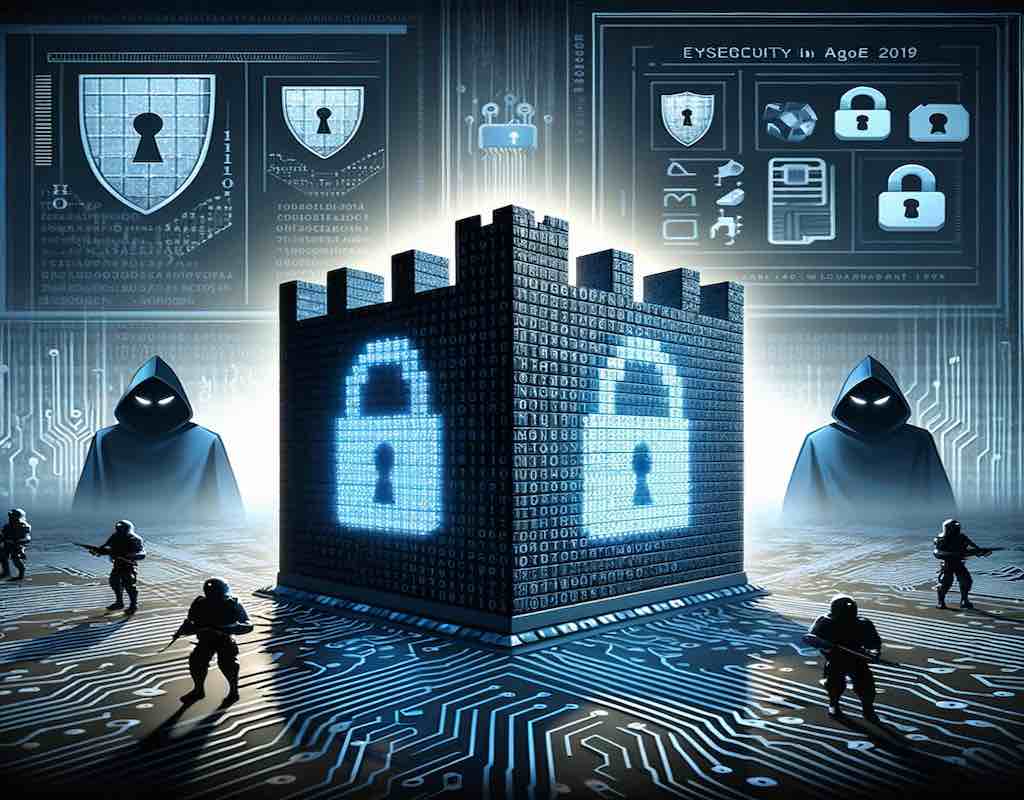Cybersecurity in the Age of Ransomware
Once a utopia of information and connection, the internet now holds a hidden shadow: the ever-present threat of cybercrime. While data breaches and malware might have once felt like distant echoes, the rise of ransomware has brought the reality of cyberattacks chillingly close to home. Imagine locked files, frozen screens, and a chilling ransom note demanding cryptocurrency – this is the new face of digital danger. The statistics paint a grim picture. Ransomware attacks are escalating alarmingly, impacting individuals, businesses, and critical infrastructure. The damage extends beyond monetary losses, disrupting operations, eroding trust, and exposing sensitive data. In this age of ransomware, cybersecurity is no longer an optional afterthought; it’s a critical line of defense, a firewall between our digital lives and the lurking shadows of cybercrime. The age of ransomware has significantly impacted the cybersecurity landscape, prompting the need for robust defenses in the digital world. Ransomware attacks have evolved, becoming more sophisticated and prevalent, particularly during the COVID-19 pandemic. The following key points shed light on the current state of cybersecurity in the face of ransomware threats:
Awareness of the Threat
So, how do we build these walls in a digital world? The first step is awareness. Ignoring the threat only leaves us vulnerable. We must understand the landscape of cybercrime, recognizing the common tactics ransomware gangs use – phishing emails, infected software downloads, and compromised login credentials. Knowledge is power, and empowering ourselves with this knowledge is the first step towards defense. Next comes cyber hygiene, the digital equivalent of washing our hands. Simple measures like strong passwords, multi-factor authentication, and regular software updates can significantly harden our defenses. We must practice caution online, scrutinizing links and attachments, being wary of downloading from unknown sources, and guarding our personal information with the same vigilance we give to physical valuables.
Increased Need for Cybersecurity
The transition to a work-from-home environment during the pandemic has exponentially increased the need for cybersecurity, as the expanded attack surface caused by remote work has aggravated the risk of malicious intrusion.
For businesses, the responsibility is amplified. Robust cybersecurity protocols, regular vulnerability assessments, and employee training become essential lines of defense. Investing in data encryption, secure backups, and incident response plans ensures protection and swift recovery in case of an attack. Collaboration is key: sharing threat intelligence, reporting suspicious activity, and cooperating with law enforcement agencies strengthen the collective defenses against cybercrime.
Prevalence of Ransomware Attacks
Ransomware has become one of the most prevalent threats to organizations, with attackers adopting more sinister tactics and exploiting vulnerabilities created by the shift to online interactions. Ransomware attacks have been the most common method of cyber-attack, making up most attacks. The fight against ransomware isn’t solely waged on individual devices or corporate servers. It demands international collaboration, a united front against cybercriminals who operate across borders with impunity. Information sharing between governments, joint investigations, and coordinated takedown operations are crucial weapons in this digital war. We need global agreements on cybercrime, standardized regulations, and effective mechanisms for holding malicious actors accountable.
Sophistication of Ransomware
Ransomware attackers operate with high sophistication, often launching attacks when the office is empty and laptops are switched off. The evolution of ransomware as a service has made it more accessible to a broader range of cybercriminals, increasing the threat. Technology itself holds promise in this battle. Advances in artificial intelligence and machine learning are being harnessed to detect and thwart cyberattacks in real time. Blockchain technology offers secure data storage and transaction verification, potentially reducing vulnerabilities. The race against cybercrime is a constant one, requiring continuous innovation and investment in cutting-edge solutions.
Challenges in Ransomware Defense
Traditional defenses alone are not enough to fend off ransomware attacks, and there is a need for constant 24/7 monitoring, threat detection, and response. Organizations must accumulate actionable threat analysis and integrate it into their cybersecurity strategies. But technology alone is not the answer. Building a safer digital world requires a shift in mindset and a collective embrace of cybersecurity as a shared responsibility.
Building Strong Cybersecurity Walls
The essence of deception in ransomware attacks underscores the importance of building strong cybersecurity walls and enhancing the vigilance of gatekeepers in the digital age. Each individual, each business, and each nation must become a brick in the wall against cybercrime. By raising awareness, practicing good cyber hygiene, embracing collaborative efforts, and harnessing the power of technology, we can build a more resilient digital future, one where ransomware becomes a fading memory, not a chilling reality.
Let us remember the internet is not an impregnable fortress but a shared space where vigilance and responsibility are the security keys. It’s in our hands, our choices, and our collective vigilance that we build the walls against cybercrime, ensuring a safer, more secure digital world for all. The age of ransomware has brought about a critical need for organizations to invest in and strengthen their cybersecurity measures. The evolving nature of ransomware attacks requires a proactive and multifaceted approach to defense, encompassing continuous monitoring, threat analysis, and a heightened focus on cybersecurity vigilance.
Actionable Tips for Individuals and Businesses:
- Individuals:
- Use strong, unique passwords and enable multi-factor authentication.
- Update software regularly and install security patches promptly.
- Be cautious with emails and attachments, scrutinizing senders and avoiding suspicious links.
- Back up your data regularly and securely.
- Report suspicious activity to authorities and security service providers.
- Businesses:
- Implement robust cybersecurity protocols and conduct regular vulnerability assessments.
- Train employees on cybersecurity best practices and phishing awareness.
- Encrypt sensitive data and implement secure backups.
- Have an incident response plan in place and test it regularly.
- Collaborate with other businesses and organizations to share threat intelligence.
Explore Emerging Cybersecurity Solutions:
- Artificial intelligence and machine learning for real-time threat detection and analysis.
- Blockchain technology for secure data storage and verifiable transactions.
- Cryptography advancements for stronger data encryption and authentication.
- Zero-trust security models for restricting access and minimizing attack surfaces.
International Collaborative Efforts:
- Interpol Cybercrime Division and regional cybercrime units.
- Cybersecurity agreements and treaties between nations.
- Joint law enforcement operations and cybercrime investigations.
- Information sharing platforms and threat intelligence networks.
Remember, cybersecurity is a journey, not a destination. Let’s commit to building a safer digital world together. This is just a starting point for your article. You can personalize it further by sharing specific examples of ransomware attacks, showcasing innovative cybersecurity solutions,
At verifyideas.com, we take these threats seriously and find and discover verified ideas on how to mitigate their damage by notifying readers constantly. Verifyideas.com is the blog for fostering creativity and innovation

